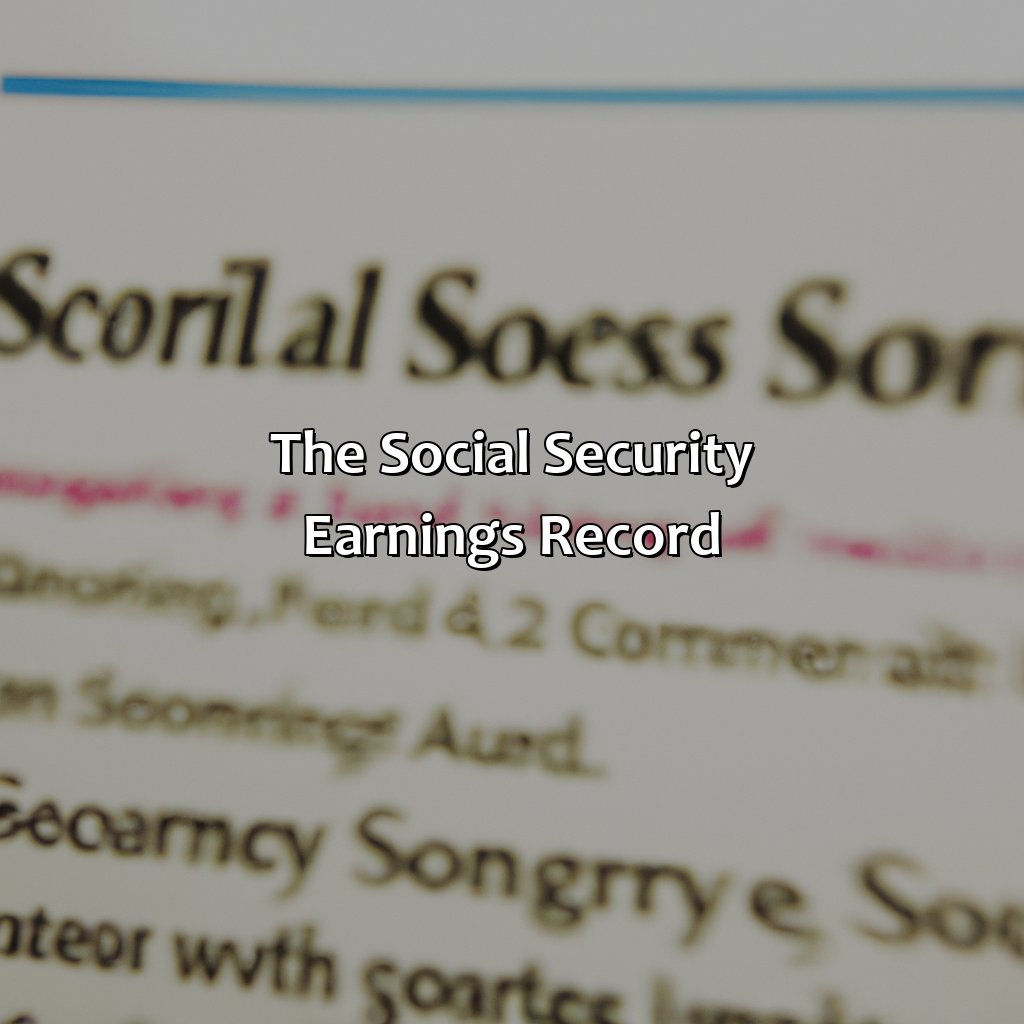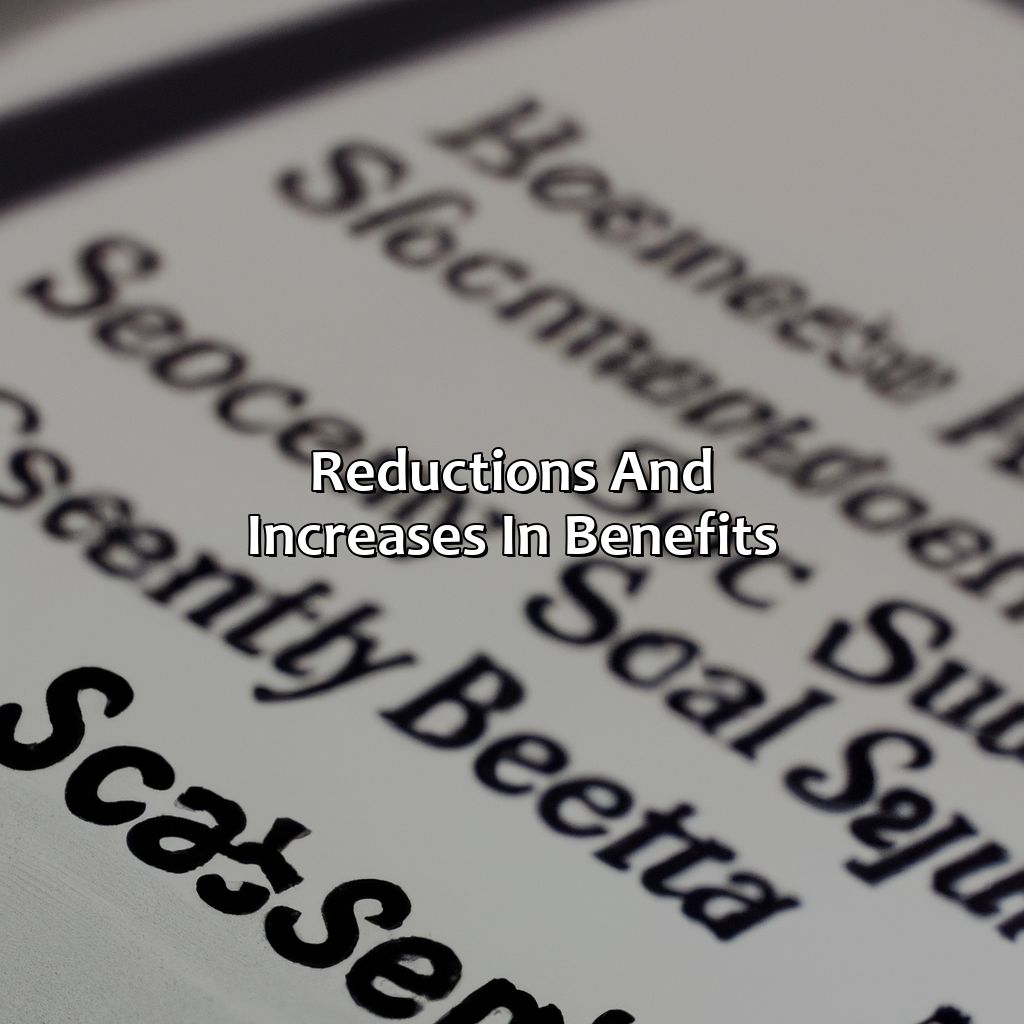How Far Does Social Security Go Back To Calculate Benefits?
Key Takeaway:
- Social Security benefits are calculated based on a person’s earnings record, which contains information about their earnings and the Social Security taxes they have paid throughout their working life.
- The 35-year rule for earnings ensures that a person’s highest-earning 35 years are used to calculate their benefits, even if they have worked longer than 35 years.
- The Average Indexed Monthly Earnings (AIME) is used to determine a person’s Primary Insurance Amount (PIA), which is the amount they will receive in monthly benefits if they claim Social Security at full retirement age.
Want to know how far back social security goes to calculate your benefits? You may be surprised. This article explores the key factors involved in calculating social security benefits and how they affect you. Become informed and empowered to maximize your retirement benefits.
How Social Security Benefits are Calculated
Social Security benefits are calculated based on several factors, one of which is the individual’s lifetime earnings. The Social Security Administration uses a formula to determine the primary insurance amount (PIA) for a worker, which is the base amount of monthly benefits they will receive at full retirement age. This formula takes into account the highest 35 years of earnings, adjusted for inflation. Additionally, the age at which a worker begins receiving benefits can also affect the amount they receive. Younger retirees receive a reduced benefit, while those who delay retirement can receive an increased benefit. It’s important to note that Social Security benefits are just one source of retirement income and may not cover all expenses.
In calculating Social Security benefits, the Social Security Administration typically looks back at a person’s earnings history for up to 35 years, with a focus on the highest-earning years. This means that if someone worked for fewer than 35 years, their benefit amount will be calculated based on their actual earnings, with zeros for any years they did not work. Depending on the individual’s age and the year they were born, the formula used to calculate benefits may also change.
It’s crucial to keep track of your earnings history and review it regularly for accuracy, as errors could affect your benefit amount. While Social Security benefits can be a valuable resource in retirement, they should not be relied upon as the sole source of income. It’s important to have multiple sources of retirement income, including personal savings and retirement accounts.
For example, consider Jane, who worked for 25 years and earned an average of $50,000 per year. Her benefit amount would be lower than someone who worked for 35 years and earned the same amount. Additionally, if Jane chooses to begin receiving benefits at age 62, she will receive a reduced benefit amount, while waiting until age 70 to begin receiving benefits could result in a higher monthly benefit.

Image credits: retiregenz.com by Adam Washington
The Social Security Earnings Record
Social Security Earnings History is the record of an individual’s lifetime earnings that are covered by Social Security. This record is used to determine the Social Security benefits that an individual is eligible to receive.
This record is created by the Social Security Administration (SSA) and includes information on an individual’s taxable earnings, as well as the Social Security taxes paid on those earnings. It helps in calculating the benefit amount an individual will receive.
It is noteworthy that the Social Security Administration only collects earnings information since 1937. This means that if an individual has worked before that year, those earnings will not be included in their Social Security Earnings History.
To ensure that you receive the correct Social Security benefits, it is essential to check the accuracy of your Social Security Earnings History. Failing to do so might result in lower benefits, which can lead to reduced financial security in retirement. Don’t delay checking your earnings history and secure your future!

Image credits: retiregenz.com by James Arnold
The 35-Year Rule for Earnings
Social Security benefits are calculated based on a person’s average indexed monthly earnings (AIME), which are determined using their earnings history. The 35-Year Rule for Earnings is a provision used by the Social Security Administration (SSA) to calculate AIME. This rule uses the highest 35 years of a person’s earnings history to determine their AIME.
Using the highest 35 years rather than all years of earnings ensures that a person’s benefit amount reflects their highest-paid years of work. If a person worked for fewer than 35 years, their AIME will include zeros for the years not worked. Additionally, if a person worked more than 35 years, only the highest-earning 35 years will be used in the calculation.
It is important to note that the SSA adjusts historical earnings to account for changes in average wages over time. This process is called indexing and ensures that older earnings are not undervalued compared to current earnings.
One person, David, worked for 40 years and had high earnings throughout his career. However, his AIME only included earnings from his highest 35 years of work. Thus, his benefit amount was slightly lower than it would have been if all of his earnings were used in the calculation.
Overall, understanding the 35-Year Rule for Earnings is important for individuals planning for retirement and their future Social Security benefits.

Image credits: retiregenz.com by James Washington
Average Indexed Monthly Earnings (AIME)
The AIME is a crucial concept that determines a worker’s Social Security benefits. It calculates the average of an individual’s highest-paid indexed earnings over 35 years. This calculation adjusts for inflation and determines how much Social Security benefits they receive.
The table below showcases the calculation of the AIME for a 5-year period.
| Year | Taxable Earnings | Indexing Factor | Indexed Earnings |
|---|---|---|---|
| 2015 | $48,098 | 1.000 | $48,098 |
| 2016 | $50,377 | 1.025 | $51,642 |
| 2017 | $51,637 | 1.053 | $54,417 |
| 2018 | $52,328 | 1.077 | $56,349 |
| 2019 | $53,600 | 1.103 | $59,101 |
The taxable earnings of each year are multiplied by the indexing factor to get the indexed earnings. Then, the 35 highest indexed earnings are added and divided by 420 (the number of months in 35 years) to determine the AIME. This amount is used as the basis for determining Social Security benefits.
Upon attainment of 62 years, beneficiaries can access their Social Security benefits. The amount they receive is influenced by factors such as income tax and reductions for early retirement. Additionally, the AIME calculation is limited to a certain maximum taxable amount each year, which changes each year.
The Social Security Act was passed into law in 1935, and it has undergone numerous adjustments since then. One of the biggest changes was the amendment in 1977 to recalibrate the indexing of earnings, which led to the modern-day calculation of AIME.

Image credits: retiregenz.com by Adam Arnold
Primary Insurance Amount (PIA)
In calculating social security benefits, there exists a Primary Insurance Amount (PIA) which is a vital factor in the computation. PIA is the monthly benefit amount an individual will receive upon reaching full retirement age. The Social Security Administration determines PIA based on an individual’s earnings throughout their working years.
The PIA calculation uses a formula that considers the individual’s average indexed monthly earnings (AIME), which is the average monthly wage indexed to wage growth over the years. PIA also considers the earliest eligibility age for Social Security benefits, which is 62 years old. The highest 35 years of indexed earnings of the individual are included in the PIA calculation.
It is important to note that PIA varies depending on the age an individual decides to claim Social Security benefits. If an individual claims benefits at the earliest eligibility age of 62, the PIA will be lower than if the individual waits until full retirement age. In contrast, delaying the benefit claim beyond full retirement age increases the PIA.
Upon understanding the PIA calculation, it is advisable to plan for retirement and consider factors that could affect Social Security benefits. Maximizing indexed earnings, considering the age to claim benefits, and calculating PIA based on full retirement age are effective ways of building a sustainable retirement plan.

Image credits: retiregenz.com by Harry Duncun
Reductions and Increases in Benefits
Benefits Adjustment
Social Security Benefits are calculated based on the individual’s average indexed monthly earnings (AIME). There are multiple factors that can affect the benefits amount an individual might receive.
Key Points on Benefits Adjustments
- Cost of Living Adjustment (COLA) – Social Security benefits are adjusted each year to keep pace with inflation.
- Early Retirement Reduction – If one chooses to begin receiving Social Security benefits before their full retirement age, the benefit amount gets reduced by a percentage.
- Delayed Retirement Credit – If one chooses to delay receiving Social Security benefits past their full retirement age, the benefit amount increases by a percentage.
- Earnings Limitations – Social Security benefits might be reduced if the beneficiary earns more than a certain limit, depending on their age.
- Spousal Benefits – Spousal benefits are calculated based on the spouse’s work history, and can be reduced depending on when the spouse receives their benefits.
- Windfall Elimination Provision – A reduction might be made to Social Security benefits if the beneficiary also receives a pension from work where they did not pay Social Security taxes.
Further Details on Benefits Adjustments
In addition to the factors discussed above, Social Security benefits might also be impacted by other forms of income and government benefits that the beneficiary receives, such as Disability benefits, Workers’ Compensation, and pensions from non-covered government employment.
Interesting Fact
According to the Social Security Administration, over 90% of people aged 65 or older receive Social Security benefits.

Image credits: retiregenz.com by David Duncun
Retroactive Benefits
In the Social Security Administration, there exists a provision known as Retroactive Benefits. This provision allows eligible beneficiaries to receive a lump-sum payment of their past due benefits, which he or she did not receive due to some valid reasons. Retroactive Benefits can be granted for the previous months or years before the application date, up to twelve months before the date of filing. This provision can result in a substantial amount of money for the beneficiary and can help offset some of the financial losses experienced during the waiting period.
The requesting individual should make a claim for retroactive benefits as soon as possible to avoid forfeiting any unpaid benefits. However, the amount of retroactive benefits will depend on the specific circumstances of the case. For instance, the amount of benefits that will be paid out will depend on several factors, such as the type of SSI program, the current PIA or the date when benefits were first asked for, among others.
It is important to note that Retroactive Benefits are only granted to eligible beneficiaries who have already applied for benefits and have not received them due to legal reasons. Retroactive Benefits are different from Delayed Retirement Credits, which are offered to beneficiaries who delay receiving benefits after their full retirement age.
According to a study by the Center on Budget and Policy Priorities, retroactive benefits are essential in providing much-needed financial support for low-income individuals and seniors during a period of economic uncertainty. The study also suggests that retroactive benefits help prevent homelessness, food insecurity, and poverty among the elderly.

Image credits: retiregenz.com by James Woodhock
Time Limitations for Claiming Retroactive Benefits
Social Security benefits are calculated based on a formula that takes into account an individual’s work history and earnings. However, there are limitations on how far back Social Security will go to calculate retroactive benefits. The time limit varies depending on the type of benefit being claimed.
For retirement benefits, individuals can only claim retroactive benefits for up to six months prior to their application date. This means that if someone applies for retirement benefits in January, they can only receive payments retroactively to July of the previous year.
For disability benefits, individuals may be able to claim retroactive payments going back up to 12 months before their application date. However, the exact time limit depends on the severity of the disability, the date of onset, and other factors.
It is important to note that individuals should apply for Social Security benefits as soon as possible, as delay can result in lost retroactive benefits. Suggestions for maximizing retroactive benefits include seeking help from a Social Security specialist, providing complete and accurate information on the application, and filing the application as soon as possible. By taking these steps, individuals can ensure that they receive the maximum amount of retroactive benefits available to them.

Image credits: retiregenz.com by James Woodhock
Some Facts About How Far Social Security Goes Back to Calculate Benefits:
- ✅ Social Security benefits are calculated based on a person’s 35 highest-earning years of work. (Source: SSA)
- ✅ If a person has fewer than 35 years of work history, zeros are added to make up the difference. (Source: SSA)
- ✅ Social Security benefits are adjusted for inflation, which can impact the amount received. (Source: SSA)
- ✅ The earliest a person can start receiving Social Security retirement benefits is age 62, but this may result in a reduction in benefits. (Source: SSA)
- ✅ Social Security benefits can be calculated and estimated using the online calculator provided by the SSA. (Source: SSA)
FAQs about How Far Does Social Security Go Back To Calculate Benefits?
How far does Social Security go back to calculate benefits?
Social Security benefits are calculated based on your highest 35 years of earnings. This means that Social Security goes back 35 years to calculate your benefits.
What if I haven’t worked for 35 years?
If you haven’t worked for 35 years, Social Security will still use 35 years in their calculation. They will use zeros for any years you didn’t work.
Can I work less than 35 years and still qualify for Social Security benefits?
Yes, you can still qualify for Social Security benefits if you have worked for less than 35 years. However, your benefit amount may be lower than if you had worked for the full 35 years.
Does Social Security consider inflation when calculating benefits?
Yes, Social Security adjusts your earnings history for inflation when calculating your benefits. This is known as the National Average Wage Index (AWI).
Will my Social Security benefits be affected by early retirement?
Yes, retiring before your full retirement age can reduce your Social Security benefits. However, the exact amount of the reduction depends on how early you retire.
Can I still receive Social Security benefits if I am still working?
Yes, you can still receive Social Security benefits even if you are still working. However, your benefits may be reduced if you earn more than a certain amount. This is known as the earnings test threshold.


